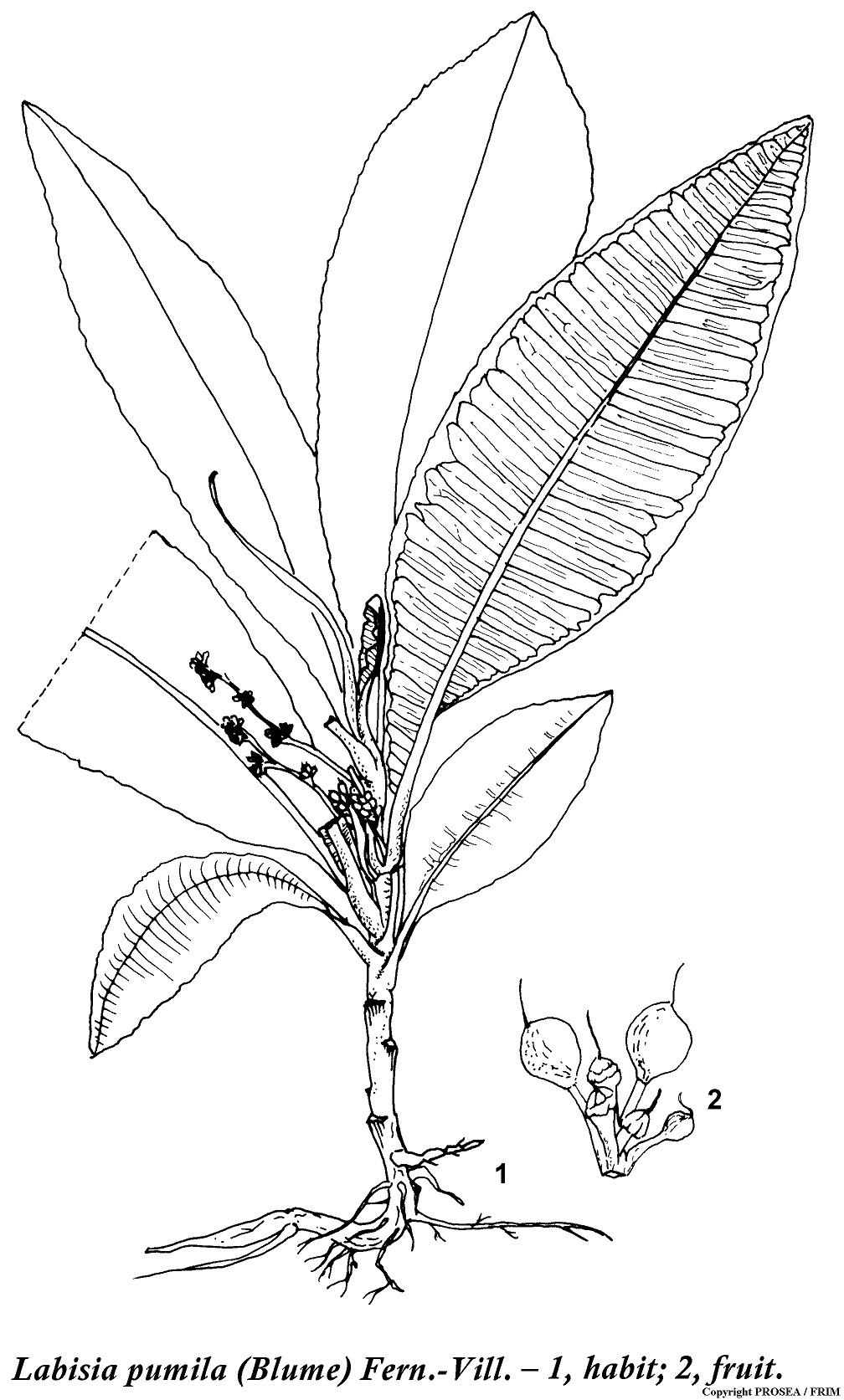Labisia pumila (Blume) Fern.-Vill.
Family
Myrsinaceae
Synonyms
Ardisia pumila Blume, Labisia pothoina Lindley.
Vernacular Names
| Malaysia | Kacip fatima, mata pelandok rimba, bunga belangkas hutan (Peninsular). |
| Indonesia | Kelimparan tuli (Belitung), udu mudung bio’ (Kenyah, East Kalimantan). |
Geographical Distributions
Labisia pumila occurs in Indo-China, peninsular Thailand and throughout the Malesian region.
Description
L. pumila is an erect or ascending undershrub that can grow up to measure 30(-50) cm tall. The stem is unbranched.
The leaves are arranged alternate, simple, oblong-lance-shaped, with a size of measure (8-)15-25 cm x (2.5-)5-7 cm, decurrent at the base, shallowly crenulate or subentire and variably lepidote below. The stipules are absent.
The inflorescence is an axillary raceme of measure 2-8 cm long and it is ferrugineously puberulous. The flowers is bisexual, regular and with 5-merous. The sepals unite at the base. They are about measure 0.5 mm long and finely pubescent outside. The petals unite at the base and about measure 2 mm long. They are violet to dirty white, valvate lobes and ovate. The stamens are opposite the petals while the anthers are sessile. The 1-celled ovary is superior while the style is slender.
The fruit is spherical in shape. It is a 1-seeded berry and red at maturity.
Ecology / Cultivation
In Java L. pumila can be found flowering and fruiting throughout the year. Labisia consists of some 6-9 species, most of them confined to western Malesia. L. pumila is the only widespread species. It is variable and sometimes several varieties are recognized.
Line Drawing / Photograph
Read More
1) Cultivation
2) Safety
References
- Plant Resources of South-East Asia No. 12 (3): Medicinal and poisonous plants 3.



